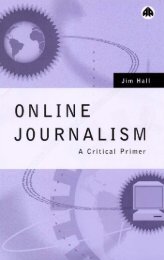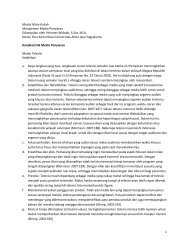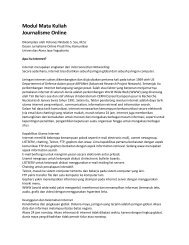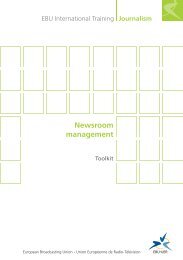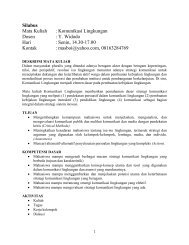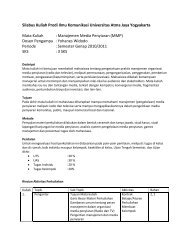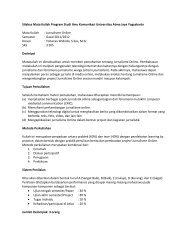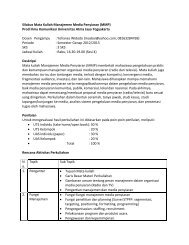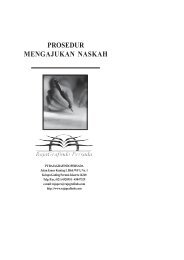1What is online journalism? - Ayo Menulis FISIP UAJY
1What is online journalism? - Ayo Menulis FISIP UAJY
1What is online journalism? - Ayo Menulis FISIP UAJY
You also want an ePaper? Increase the reach of your titles
YUMPU automatically turns print PDFs into web optimized ePapers that Google loves.
Design your web resource 187<br />
th<strong>is</strong> knowledge, you can employ another method of categorization,<br />
described by Rosenfeld and Morville as ‘organization schemes’.<br />
They identify two kinds:<br />
exact, for example alphabetical, chronological and geographical<br />
– these suit users who know exactly what they are looking for<br />
and what it will be called, but are less helpful for those who do<br />
not; and<br />
ambiguous, th<strong>is</strong> <strong>is</strong> by topic (e.g. the phone book yellow pages),<br />
by task (e.g. booking different types of holiday) or by user<br />
group (where you have two or more d<strong>is</strong>tinct user groups with<br />
different requirements, you can group the content to suit<br />
them).<br />
As Rosenfeld and Morville acknowledge, ambiguous organization<br />
schemes are the most difficult but can be the most useful,<br />
particularly for those users who do not know exactly what they are<br />
looking for:<br />
In an ambiguous organization scheme, someone other than<br />
the user has made an intellectual dec<strong>is</strong>ion to group items<br />
together. Th<strong>is</strong> grouping of related items supports an associative<br />
learning process that may enable the user to make new<br />
connections and reach better conclusions. While ambiguous<br />
organization schemes require more work and introduce a<br />
messy element of subjectivity, they often prove more valuable<br />
to their user than exact schemes.<br />
You should also remember that your users are not a static entity.<br />
If they like what they see, they will come back. Yet, when they<br />
return, they will be different users, more knowledgeable because<br />
of their initial v<strong>is</strong>it. So you have to consider grouping information<br />
and providing levels of access that will sat<strong>is</strong>fy the changing<br />
knowledge and needs of the users.<br />
As David Siegel (1997) puts it:<br />
Information designers talk about granularity – putting just the<br />
right amount of information in front of the user at any one




